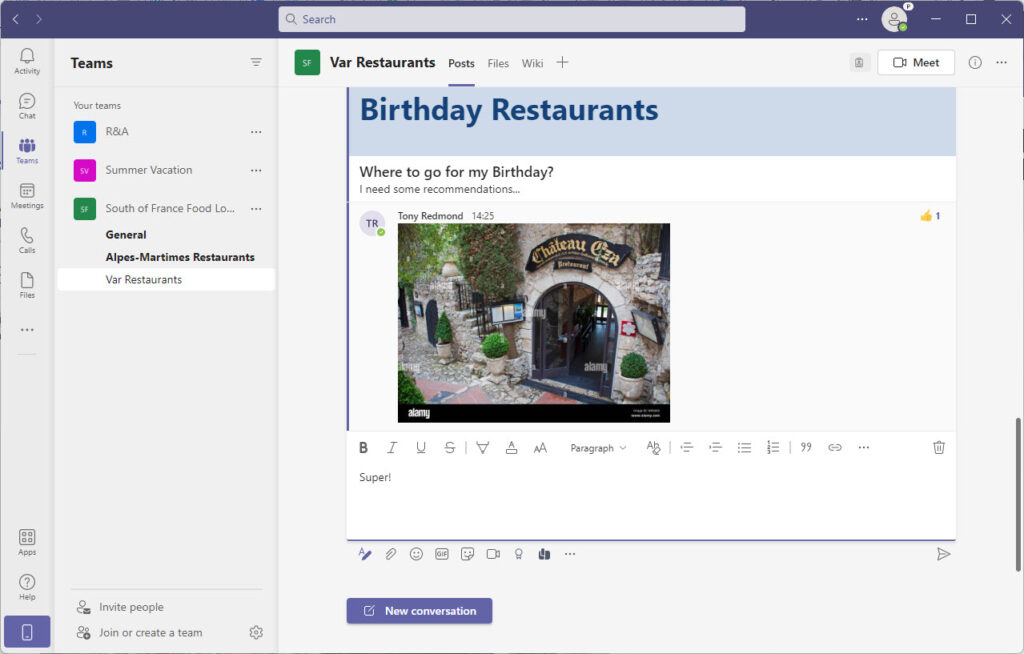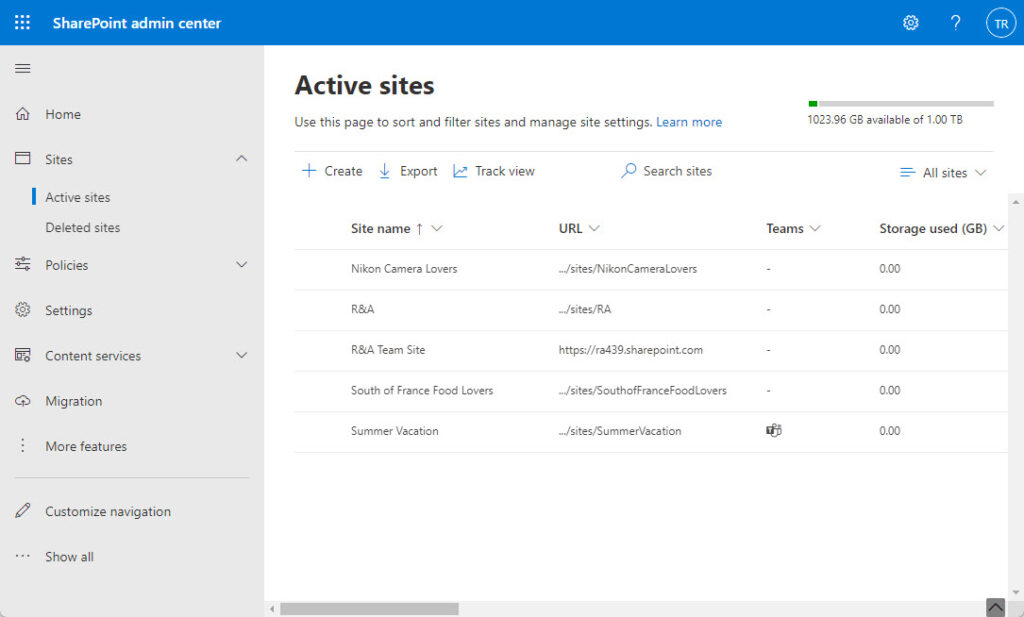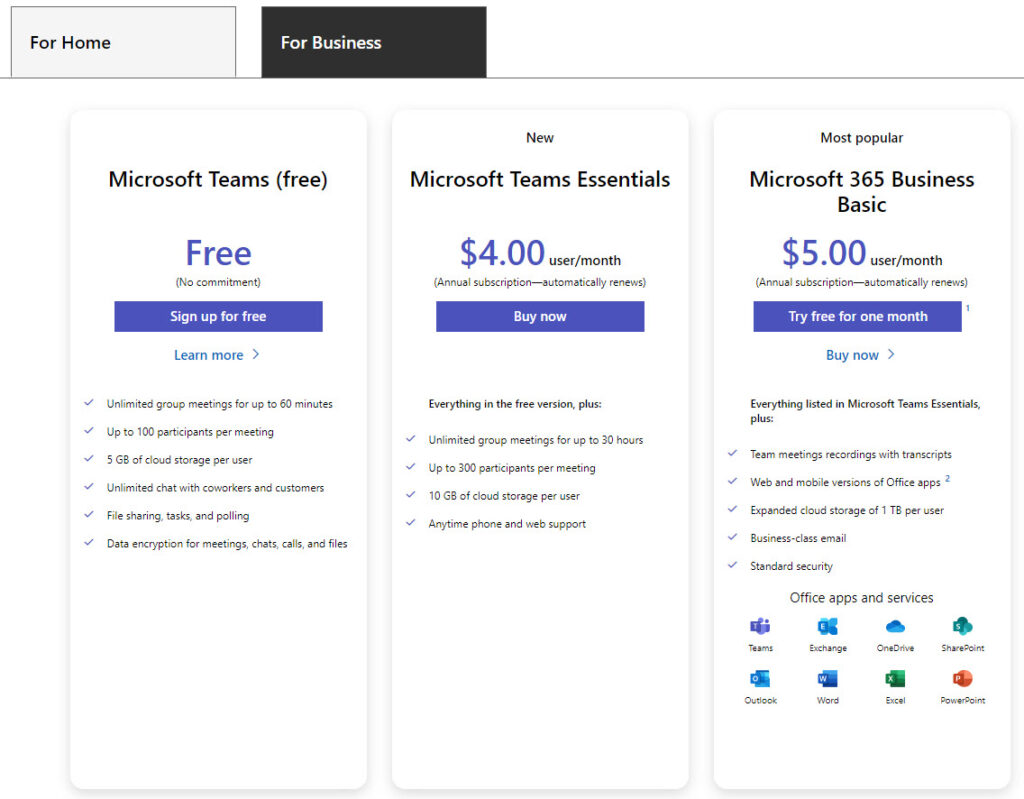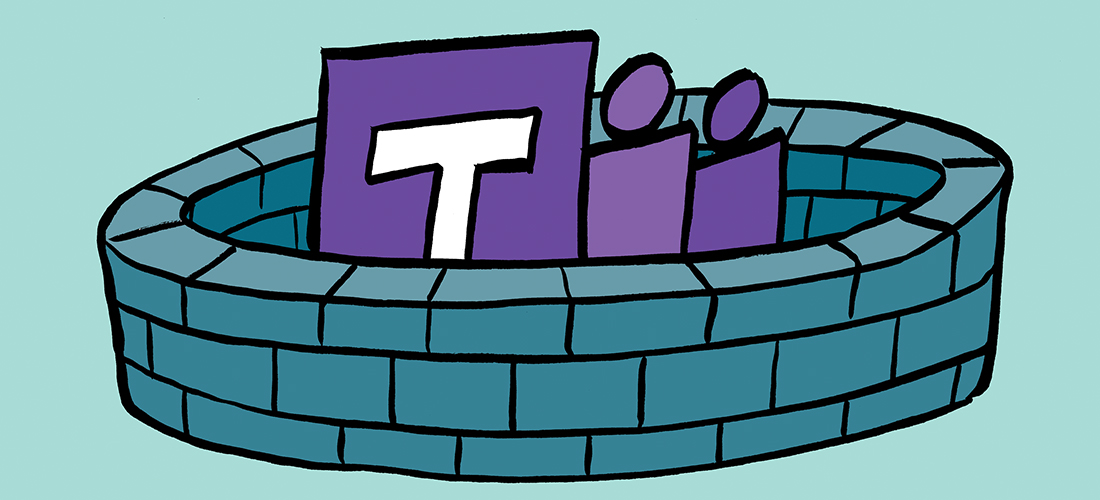Two Versions for Small Organizations to Consider
On December 1, Microsoft announced a new Teams Essentials product priced at $4/user per month. This is the first paid-for Teams offering that doesn’t include other Microsoft 365 components like SharePoint Online and Exchange Online. Microsoft positions Teams Essentials as “communications for small businesses and community groups” and says that the new product is “outstanding value.”
Teams Free
I’m not so sure. Microsoft has offered a free version of Teams since 2018. Like Teams Essentials, the free version is a stripped down version of the enterprise product. It uses an Azure AD tenant and comes with Teams chat, discussions in channels (Figure 1), meetings, personal files (OneDrive for Business) and calling.

Like its enterprise counterparts, Teams uses SharePoint Online sites to store files for channels. You can see this by copying a link to a file uploaded to a channel. Here’s an example link for a file stored in a channel in the South of France Food Lovers team illustrated in Figure 1:
https://ra429.sharepoint.com/:x:/s/SouthofFranceFoodLovers/ERZpcMk9eTdKkY72BuqCaFEBNig_OnwxMACx5IjyrJHpCQ?e=sr0t17
Once you know the name of the tenant, you can access the SharePoint admin center to see details of the sites with a link like: https://ra429-admin.sharepoint.com/_layouts/15/online/AdminHome.aspx#/home (Figure 2).

Teams Free can install some but not all apps available for Teams enterprise (for instance, Viva Insights and Viva Learning decline to load because of “a problem with the organization’s REST API settings.” Because an account using the free version does not connect to an Exchange mailbox, no calendar is available, but you can still schedule online meetings and send the deeplink for the meeting space to those you’d like to attend.
The major advances I noticed since I last paid attention to the free version in mid-2018 are the addition of meetings and calling (including pop-out windows, background effects, live reactions, and breakout rooms) together with the ability to install apps. In a nutshell, there’s a lot of functionality in the free version of Teams.
Teams Essentials
Which brings us neatly to Teams Essentials, available for delivery through Microsoft Cloud Partners or direct from Microsoft (Figure 3). According to Microsoft. Teams Essentials includes everything in Teams Free plus some added benefits.

Examining Microsoft’s comparison chart (which says that breakout rooms aren’t in either Teams free or essentials, but I was able to use breakout rooms in a free meeting), I found the differences shown in Table 1:
| Feature | Teams Free | Teams Essentials |
| Meeting size | Up to 100 | Up to 300 |
| Meeting duration | Up to 60 minutes | Up to 30 hours |
| Group chats | Up to 100 participants | Up to 300 participants |
| Cloud storage (OneDrive for Business) | 5 GB per user | 10 GB per user |
| Support | None | Phone and web |
In other words, your $48 yearly subscription pays for bigger and longer meetings (30 hours is a tad excessive), bigger group chats, more storage, and support. And although Microsoft positions Teams Essentials as being separate from Microsoft 365, the technology needed to make Teams work is such that there’s only so much of Microsoft 365 you can extract and still have functioning Teams.
Interestingly, if you extend your budget a little more to $60/year and choose Microsoft 365 Business Basics, you get a lot of Microsoft 365 added back to the mix with Exchange Online, full access to SharePoint Online, Planner, and Stream plus extra security like multi-factor authentication for user sign-ins. The extra dollar a month per user buys a heap more functionality.
Phones and Calling
Microsoft hasn’t said if Teams Essentials can be extended with the new Teams Phone with Calling Plan SKU to enable calls to landlines and mobile phones via the PSTN, nor anything about audio conferencing support, due for addition to Teams in the Office 365 and Microsoft 365 SKUs next March. Calling depends heavily on the Teams admin center and PowerShell for management, and I assume that some form of the Teams admin center will be available to Teams Essentials customers to allow them to add users, etc.
Seeking the Market for Teams Essentials
I’m puzzled because I don’t understand where Microsoft sees the market for Teams Essentials. Given its functionality, cash-poor organizations will likely go with Teams Free. And if an organization has some budget, an extra $12/year per user gives them the entry-level Microsoft 365 plan with many more features. It seems like Teams Essential targets a small gap in the market.
Perhaps the reasons behind the creation of Teams Essentials boil down to two things. First, create a Teams offering that isn’t bundled with Microsoft 365 and Office 365 and so avoid the accusations of competitors like Slack that this kind of bundling gives Teams an unfair advantage. Second, have a direct competitor for companies that don’t want the other Microsoft 365 features and are considering Zoom Pro ($14.99). Both reasons have the ring of truth about them. Time will tell.





Paul Thurrot has much the same opinion as you:
https://www.thurrott.com/cloud/microsoft-365/259838/tip-thinking-about-teams-essentials-dont
The Real Person!
Author Tony Redmond acts as a real person and passed all tests against spambots. Anti-Spam by CleanTalk.
Thanks for pointing me to Paul’s article. He focuses mostly on the value of the Free offering plus the entry-level Microsoft 365 plan. I try to point out just how much technology is available free. And I suspect that there’s enough in Teams Free for many organizations to get a lot of work done.